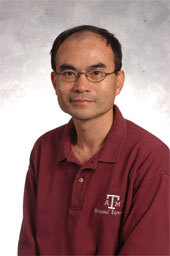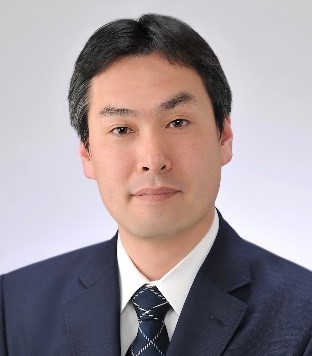International Chair Professor
|
Photo |
Name |
Title |
Speciality |
|---|---|---|---|
|
|
Hung-Jue Su |
|
In the discipline of Polymer Technology in which he served with excellence |
|
|
Richard.H. Fish |
Lawrence Berkeley National Laboratory, USA |
In the discipline of organic and organometallic chemistry in which he served with excellence |
|
|
Mahdi M. Abu-Omar |
Department of Chemistry - UC Santa Barbara |
biomass conversion and bio-inspired chemistry |
|
|
Hideki Yorimitsu |
Kyoto University (京都大學) |
In the discipline of Organic Chemistry in which he served with excellence |
|
|
Pascal Asselot |
Vulnerant |
In the discipline of_intellectual property in which he served with excellence |
|
|
Tamotsu Takahashi |
日本 北海道大學
|
Cleavage/formation of carbon-carbon bonds in organic molecules has been a major challenge in synthetic organic chemistry. Prof. Takahashi group has developed such reactions with unique modes of C-C bond cleavage/formation or interesting stereoselectivity with utilizing transition-metal reagents or catalysts. Recently, they have developed a novel reaction of forming an indene derivatives from a titanocene species. In this reaction, C-C bond cleavage of a Cp ligand in the titanocene and migration of an alkyl group afford the indene product. |
|
|
Kin Shing Chan |
Professor The Chinese University of Hong Kong |
1.Carbon-hydrogen and carbon-carbon bond activation by transition metal complexes 2.Green Chemistry |
|
|
Masakazu Anpo |
Vice-President & Executive Director Osaka Prefecture University |
Research activities focus on how to apply titanium oxide-based photocatalytic materials to the various sustainable, non-hazardous and economic chemical processes under different reaction systems and conditions. Especially, I will introduce the development of visible light-responsive TiO2 photocatalysts, enabling to absorb visible light and operate under visible light irradiation without any loss of their original photocatalytic reactivity under UV light irradiation. Unique and highly efficient Ti-oxide thin film photocatalytic materials which enable the absorption of visible light of longer than 550 nm and operate as an effective environmentally-friendly photocatalyst leading to the efficient use of solar energy for the separate production of clean H2 and O2 from water will be introduced. Also, the artificial-light plant factory of OPU using LED lights for the cultivation of various fresh and safe vegetables as well as an idea to apply photocatalytic reaction systems to the plant factory will be introduced. |
|
|
Joseph S. Francisco |
Professor Chemistry Department, Purdue University |
Research in our laboratory focuses on basic studies in spectroscopy, kinetics and photochemistry of novel transient species in the gas phase. These species play an important role in atmospheric, biochemical and combustion processes. Yet questions dealing with how structures correlate to reactivity and photochemical mechanisms have not been addressed for these systems. These problems are addressed by research efforts in our laboratory. Specific research areas of interest are: 1) Spectroscopic determinations of electronic and vibrational transitions in free radicals; 2) Measurement of the kinetics of individual gas-phase reaction steps involving free radicals in complex reaction mechanisms; and 3) Characteristics of primary photo chemical processes that free radicals can undergo. |
|
|
Jimmy Chai-mei Yu |
Head of United College The Chinese University of Hong Kong |
Preparation and characterization of novel nano-structured materials, Environmental and energy applications of photocatalysis, Development of analytical methods for environmental and biological samples. |
|
|
Kevin Bernard Nachtrab |
Senior IP Council Johnson & Johnson |
Intellectual Property related issues and Technology Licensing |
|
|
Joseph S. Thrasher |
Professor Chemistry Department, Clemson University |
Dr. Thrasher’s research involves the preparation, characterization, and utility of novel sulfur-fluorine compounds; industrial fluorine chemistry including agro- and pharmaceutical intermediates, fluoropolymer chemistry, and electrochemistry; fluorine-containing molten salts/ionic liquids; fluorous media for improved separations and catalysis; batteries and fuel cell technology; development of new analytical methodologies in fluorine chemistry; and computational chemistry. Current projects in the Thrasher Group can be categorized into one of three different areas: (1) sulfur-fluorine chemistry, (2) industrial fluorine chemistry, and (3) fuel cell technology. |
|
|
Hiroyuki Matsuzaka |
Professor, Department Chair Osaka Prefecture University |
Highly Reactive Dinuclear Transition Metal Complexes |
|
|
Hideki Tanaka |
Professor,Vice Dean, Graduate School of Natural Science, Okayama Univ. Department of Chemistry, Faculty of Science, Okayama University, Japan |
Prof. Tanaka’s research interest has been focused on structure and dynamics of water and ice in bulk and confined geometry and on thermodynamic stability of clathrate hydrates. |
|
|
Esther Belin-Ferré |
Director Directeur de Recherche at CNRS (1991-2005) |
Experimental investigation of the electronic structure of solids: metals, semiconductors, insulators, chalcogenides, oxides, silicides, hydrides, etc. using X-ray spectroscopies (Emission, Photoabsorption and Photoemission). Long standing interest in quasicrystals and complex crystalline phases for the description of their electronic structure and in relation with transport and physical properties. |
|
|
Thomas Rainer Julius Voit |
Judge Head of Dept. 1 Germany Federal Patent Court |
Intellectual Property related issues and Litigations |
|
|
TOSHIAKI IIMURA |
Chief Judge Japan Intellectual Property High Court |
Intellectual Property related issues and Litigations |
|
|
Yasushi Nishihara
|
Professor Graduate School of Natural Science and Technology, Okayama University, Japan |
Professor Nishihara’s research interests are organic synthesis mediated and/or catalyzed by organometallic compounds and their application towards functional materials. In particular, activation of the chemically unreactive bond, e.g. the C-C, C-Si, and C-B bonds is one of the subjects. The unreactive bonds might be cleaved by the highly unsaturated organometallic species and the subsequent C-C bond-forming reaction, for example, the cross-coupling reactions, can be attained. Furthermore, the synthesized organic molecules are used as the useful functional materials such as liquid crystals, electroluminescent materials, anti-cancer agents, and organic solar cells. |
|
|
Patricia Ann Thiel |
教授 美國愛荷華州立大學 |
Metal Nanostructures on Semiconductors and Insulators Surfaces of Complex Metallic Alloys Stability and Coarsening of Metal Nanostructures on Metal Surfaces |
|
|
Max (Shing-Chung) Yen
|
Professor Dean and Steel Dynamics Distinguished Professor |
I have been actively engaging in the development of research initiatives and concept papers to be considered through state and federal appropriation. Some of these concept papers were also developed into proposals submitted to state and federal funding agencies. These activities are intended to form interdisciplinary teams/partnerships, to establish new programs, to bring resources for research and education, to create new jobs, and to stimulate economic development. What follows is a summary of the initiatives that I developed based on the compatibility between the national priority and the capability at SIUC. I am also responsible for building the necessary research team and advocating the initiatives. The underlined initiatives have been funded. |
|
|
Ming-H Hung |
DuPont (Performance Materials) Senior Research Fellow
|
More than 30 years of professional experience with global leading chemical Company DuPont, and have been leading and engaging in both long term and short term R&D, also the crisis resolutions. I also served as the Project Leader for Corporate Contract Research Programs (with Beijing Univ., Chinese Academy of Sciences, Shanghai Institute of Organic Chemistry, Taiwan Union Chemical Lab (now ITRI), France CNRS, and so on), and hence developed very strong relationship with many international top ranking academic schools and Institutes, and also the global leading chemical companies. Strong background in leadership, project management, pioneer R&D, organic, fluorine, polymer/material chemistry, and manufacturing process optimization. Granted more than 60 US Patents, and received numerous prestigious awards from DuPont Company. |
|
Professor Yuan Chuan Lee |
Academician of Academia Sinica Professor of Biology, Johns Hopkins University |
Yuan Chuan Lee, Ph.D., is a research professor in the Department of Biology at The Johns Hopkins University. He was elected a fellow for “distinguished contributions to glycoscience, particularly for the seminal discovery of glycoside clustering effect in protein-carbohydrate interactions, and for pioneering work” in the analysis of glycans — the carbohydrate portion of a glycoconjugate, such as a glycoprotein or glycolipid. Lee’s laboratory is working to understand how carbohydrate groups in glycoconjugates are recognized in biological systems and how they function as biological signals. His work extends to drug delivery systems in which nanotechnology is employed. |
|
|
|
Tohru Yamada |
Professor, Department of Chemistry, Faculty of Science and Technology, Keio University |
Researching and developing new organic synthesis methods using transition metal complex catalysts. Theoretical analysis of high-performance and highly functional catalysts, including catalytic asymmetric reduction reactions using cobalt complexes, new synthesis methods for heterocyclic compounds with carbon dioxide capture activation using silver catalysts, and application of microwaves to asymmetric synthesis reactions. |























